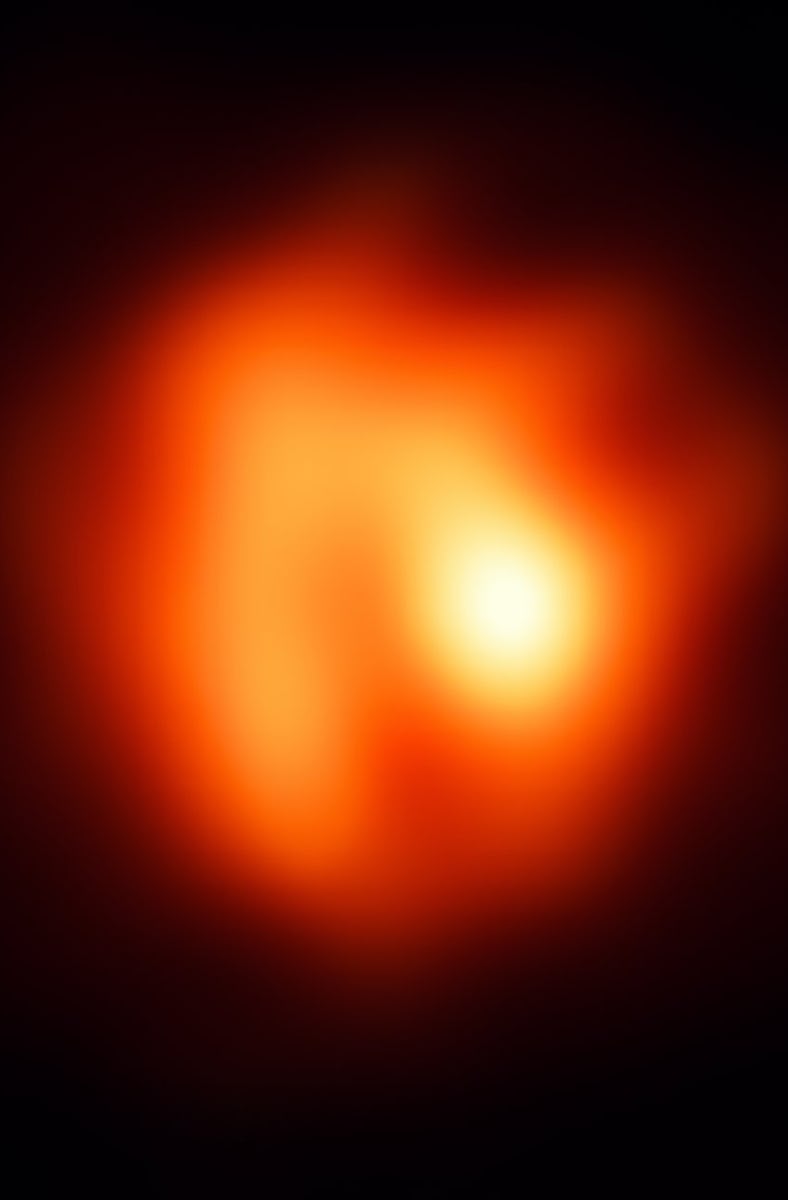Gasp! New Telescope Image Previews the Slow Death of the Sun
R Sculptoris will eventually paint the sky with a planetary nebula, scattering elements that will form new star systems.

This distant red giant star is close to the end of its life, when it will puff out its outer layers to create a dazzling nebula.
Astronomers recently used the European Southern Observatory’s Very Large Telescope to capture an image of R Sculptoris, a red giant star 1,200 light years away. The star has already burned up its hydrogen fuel, and it’s slowly shedding its outer layers, wrapping itself in a shroud made of its own skin — but ESO astronomer Markus Wittkowski and his colleagues spotted a hole in that shroud. Their observations may offer clues about what comes next.
Going Out in a Blaze of Glory
The bright spot in this image is a gap in the circumstellar envelope of gas and dust, offering a clear view straight down to the star’s surface.
At 1,200 light years away, R Sculptoris is flickering like a guttering candle flame. In its younger days, the star was similar to our Sun, but now it’s a dying red giant, sloughing its mass off into space. The star has long since run out of hydrogen to fuse into helium in its core; without the energy of fusion to push outward against the star’s crushing weight, the core crumpled inwards. Under that increased pressure, things heated up, which caused the outer layers of the star to puff outward.
At this point in its life, R Sculptoris is more than a thousand times brighter than our Sun, but most of that light is shrouded by clumps of gas and dust surrounding the star, called a circumstellar envelope. It’s made of material stripped away by the red giant’s powerful stellar wind. The bright spot in this image of R Sculptoris, captured with the European Southern Observatory’s Very Large Telescope, is a gap in the circumstellar envelope, offering a glimpse of the star’s bright surface.
Astronomers looking at R Sculptoris through the Atacama Large Millimeter/submillimeter Array, a telescope in the Chilean highlands, have previously spotted strange spiral patterns in the circumstellar envelope, which might reveal the presence of a companion star — so at least R Sculptoris isn’t spending its final years alone.
Eventually, with its dying breath, the aging red giant will exhale all of its outer layers, forming what’s called a planetary nebula: an immense cloud of gas and dust, slowly expanding into space. At its center, all that’s left of R Sculptoris will be its burned-out core, a dense clump of material called a white dwarf. This is what happens to stars that aren’t massive enough to collapse and explode in a supernova; in a few billion years, the same fate awaits our warm yellow Sun.
Studying R Sculptoris now may offer some clues about what kind of planetary nebula it will eventually create.
“The amount of mass lost by a star actually has huge implications for its stellar evolution, altering its future and leading to different types of planetary nebulae,” says the European Southern Observatory in a statement.
This article was originally published on